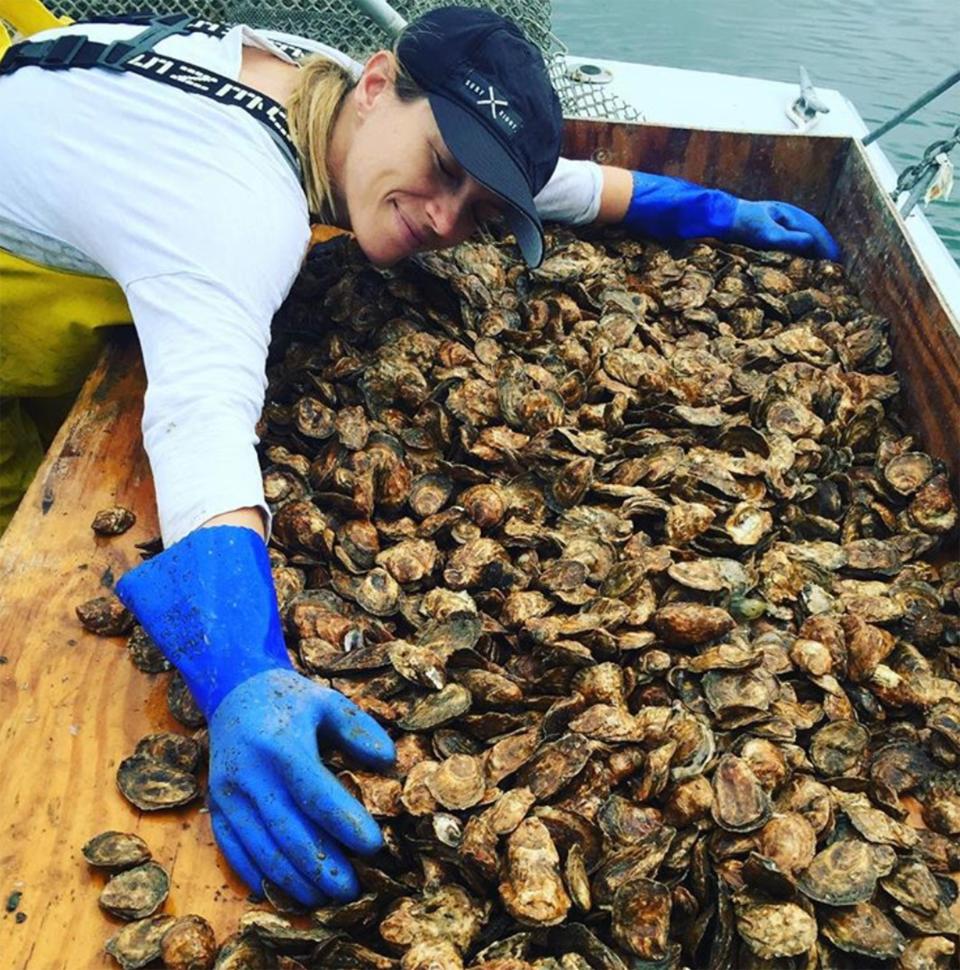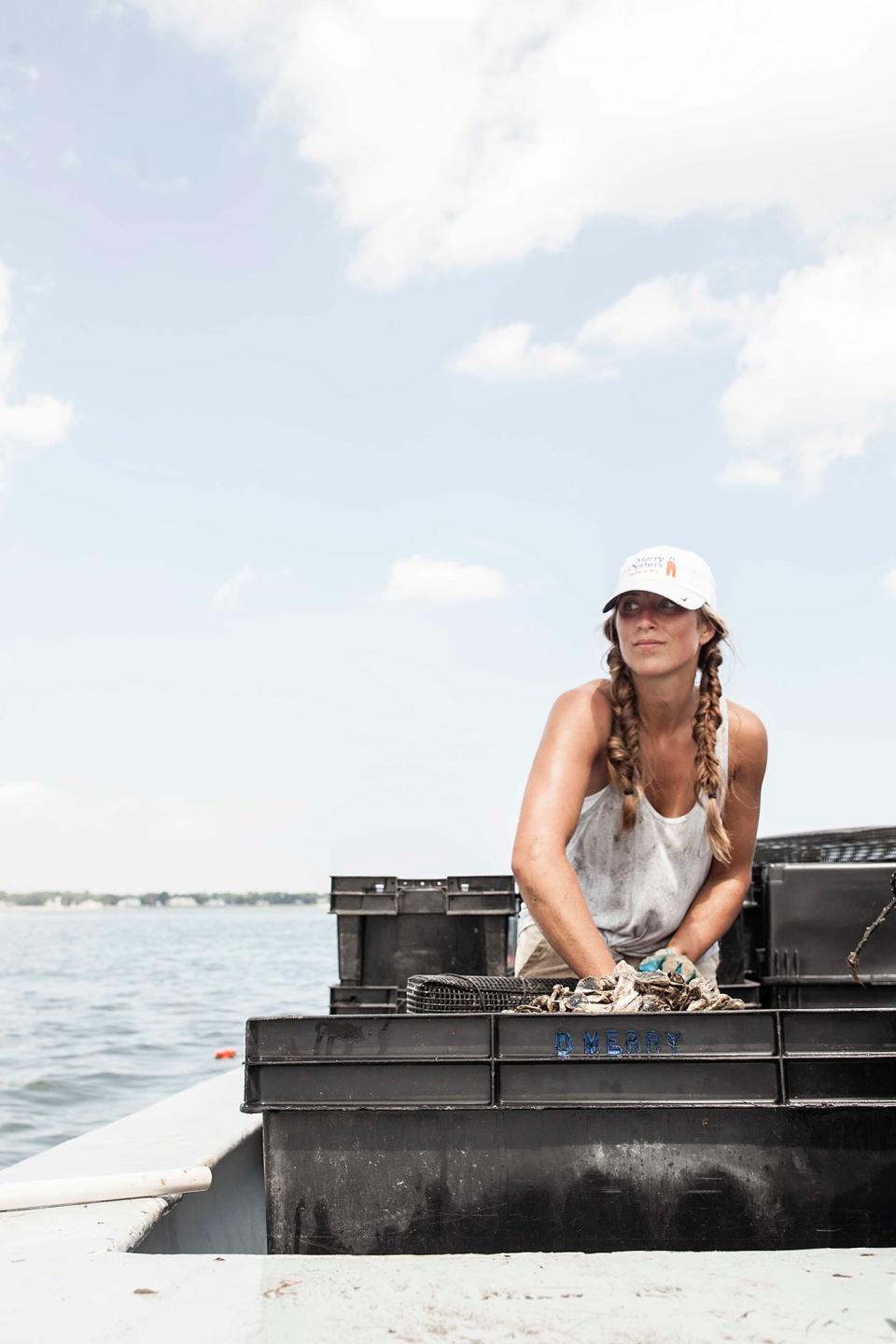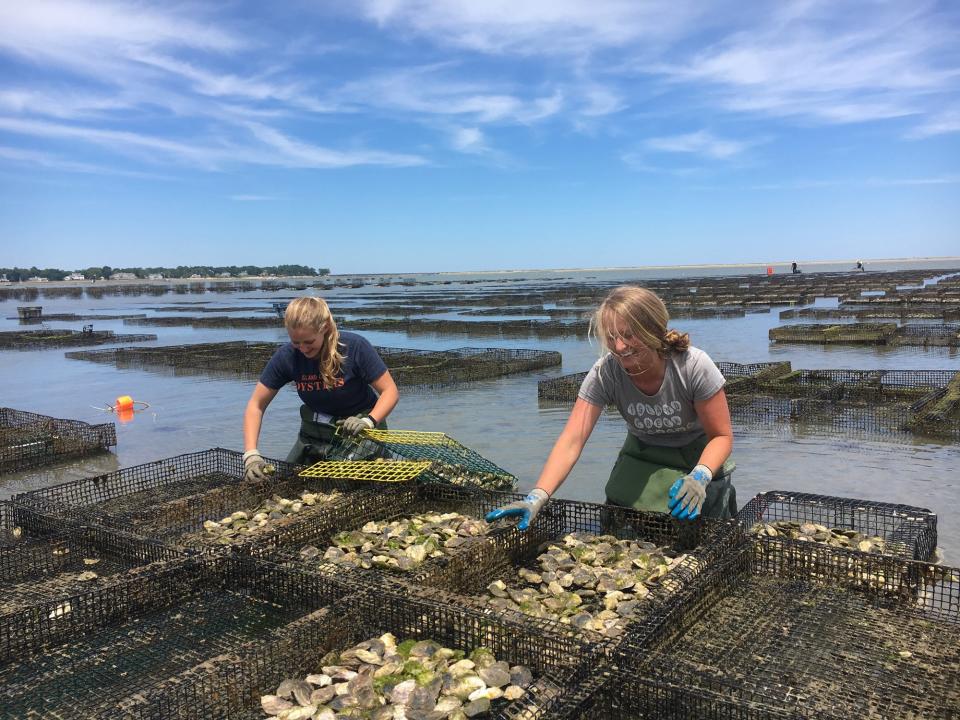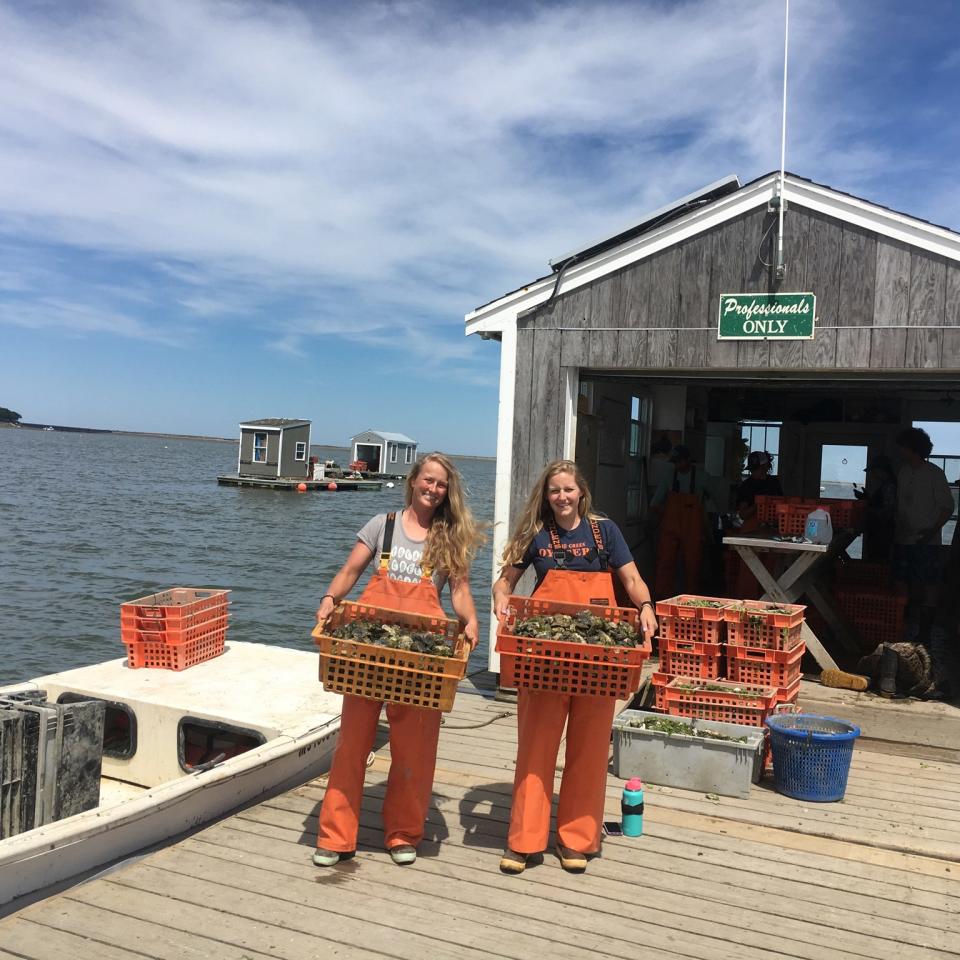How to Find and Serve a Perfect Oyster, According to the New Englanders Who Know Best
A lot has to happen for an oyster to make its way from the ocean to your plate: farmers sorts through thousands of oysters to separate the 1.5-inchers from the 1.75-inchers, making sure each shell’s sand is purged properly; dragging 50-pound crates of oysters through the water. They spend hours and hours wading in the water to check on the oysters’ development, even in the middle of frigid winters. That an oyster goes from a seedling in the Atlantic to a restaurant in Manhattan is nothing short of a miracle.
For a long time, the grueling work of the industry made commercial oyster cultivation a male-dominated game. But in New England, where some of the world’s best oysters can be found, more and more women are taking up the profession. Here, a few farmers share their experiences raising oysters—and of course, their expert tips on how to shuck and serve the perfect briny bivalve.
Hannah Pearson, Hatchery Manager, Island Creek Oysters
In the early stages of oyster farming, the oysters are about the size of a grain of sand and require a delicate ecosystem to begin growing. Hannah Pearson is the Hatchery Manager for Island Creek Oysters in Duxbury, Massachusetts, where she oversees growing microalgae cultures to feed the oysters, spawning procedures, and taking care of microscopic oyster larvae. “Women bring a nurturing sense to the oyster world,” says Pearson. “Maybe it comes more naturally to us, but in the hatchery, women have a special care for baby oysters. With that aspect also comes a high level of attention to details, which for this job are many."
Hannah’s Tip: “Select an oyster with a deep cup—something meaty!”

Jenny Ross, Owner, Monk’s Cove Oysters
When Jenny Ross isn’t testing colors and selecting laces in her day job on New Balance’s design team in Boston, she can be found on the water in Bourne, Massachusetts. Monk’s Cove Oysters, the company she shares with her husband, is very much a “side hustle,” as she puts it, but the amount of work she’s done to get her operation going might as well have been a full-time gig. “There was no regulation in Bourne when we started,” says Ross. “There wasn’t even a process to apply for a land grant. We had to work with the town, with the Army Corps of Engineers, and there was a lot of opposition from people who didn’t want to see anything in their water view even though oyster farming is sustainable and has great benefits for the watershed… We only sell to one restaurant, the Lobster Trap in Bourne, and from the deck you can see our farm. We’ve had people call from restaurants across the country and say they’ll buy everything we have, but people love the story of a small husband and wife farm. There’s so much demand, but that’s not interesting to us. It’s more interesting to have super-local oysters that taste like the place they come from.”
Jenny R.’s Tip: “When shucking, most people come in through the hinge, which is an easy opening. But if you go in through the side, sort of the inside of the crescent shape, it keeps the hinge intact and looks much better on the plate. Once you get the hang of it, it’s actually easier.”

Jenny Mattern, Farm Manager, Merry Oysters
The farm manager of any oyster company is more or less the braun of the operation, but the physical demands of the job were never overwhelming for Jenny Mattern of Merry Oysters. “I’ve always had the mentality that whatever you can do, I can do, too. This job isn’t for everyone… We’re lifting crates and bags all day. You have to be able to lift 50 pounds over your head. Sometimes I spend 8 hours a day culling oysters into different sizes. So male or female, you’re pretty badass for being an oyster farmer. I’ve never approached it like I’m a woman in a man’s job. As long as you are hardworking, people seem to be impressed by that.”
Jenny M.'s Tip: “We shuck using something called the ‘Lollipop Method.’ The tip of the knife goes straight into the hinge just enough so you can lift it up like a lollipop. From there, simply twist the knife until the shell pops open.”

Abigail Carroll, Owner, Nonesuch Oysters
After living in Paris for 10 years and making a living trading tech stocks from her computer, Abigail Carroll decided it was time to make some personal changes. So she returned home to Biddeford Pool, Maine, and—long story short—ended up taking over an oyster farm in the area. Today, her company Nonesuch Oysters sells to the likes of Balthazar in New York, and offers farm tours that are one of the most popular attractions in southern Maine. “When I began, I was lacking almost every skill I needed to run an oyster farm. But never once was I made to feel inferior or incompetent because I was a woman. People gave me help because they saw me working my tail off. But they might have teased me about my tennis skirts I wear to work in the water—but I find them the perfect thing to wear for this work. First of all, I’m conscious of the fact that I’m on the water with a bunch of dudes. I want something that has a little bit of modesty but is also quick-dry… I also have a whole rash of Cynthia Rowley wetsuits that are like polka-dot… If you demonstrate a willingness to work, that is the measure. It’s not about your gender. Not to say I haven’t felt a little bit of competition from the boys!”
Abigail’s Tip: “On the farm we do an on-the-fly mignonette sauce, which I love for that vegetable crunch and a bit of acidity. Just mince a shallot and throw in some Prosecco vinegar—that’s all it needs.”

Ursula Balmer, Production Manager, Island Creek Oysters
The attention to detail required to harvest, sort, and bag up thousands and thousands of oysters is immense. Luckily for Ursula Balmer at Island Creek Oysters, it comes easily. “This job requires multitasking, planning and lots of follow through. Plus, there are also the unexpected elements that Mother Nature throws at you,” says Balmer. “I would say the field is still somewhat male dominated, but I’m definitely seeing more and more women in the business as time goes on.”
Ursula’s Tip: “A big pet peeve of mine is when people use too much cocktail sauce. It ruins the taste of the oyster itself. [Eat it] on its own, or just a little bit of lemon juice is best.”


